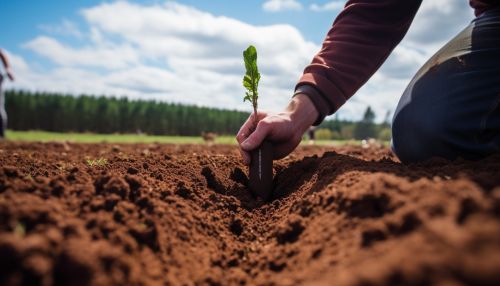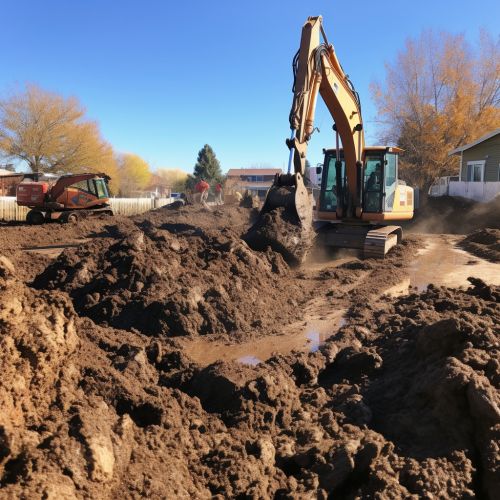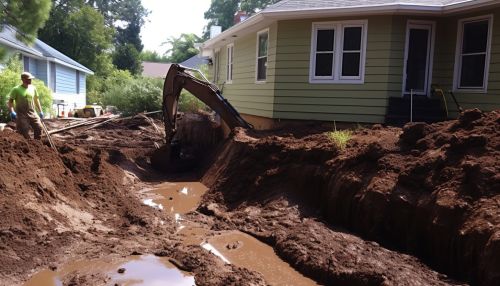The Role of Metagenomics in Soil Health
Introduction
Metagenomics is the study of genetic material recovered directly from environmental samples. The broad field may also be referred to as environmental genomics, ecogenomics or community genomics. While traditional microbiology and microbial genome sequencing rely upon cultivated clonal cultures, early environmental gene sequencing cloned specific genes (often the 16S rRNA gene) to produce a profile of diversity in a natural sample. Such work revealed that the vast majority of microbial biodiversity had been missed by cultivation-based methods. Recent studies use "shotgun" Sanger sequencing or massively parallel pyrosequencing to get largely unbiased samples of all genes from all the members of the sampled communities. Because of its ability to reveal the previously hidden diversity of microscopic life, metagenomics offers a powerful lens for viewing the microbial world that has the potential to revolutionize understanding of the entire living world. As the price of DNA sequencing continues to fall, metagenomics now allows microbial ecology to be investigated at a much greater scale and detail than before.


Metagenomics and Soil Health
Soil health is a critical component of the natural environment. It is the continued capacity of soil to function as a vital living ecosystem that sustains plants, animals, and humans. The health of soil is a measure of the continued capacity of soil to function as a living system. Healthy soils maintain a diverse community of soil organisms that help to control plant disease, insect and weed pests, form beneficial symbiotic associations with plant roots, recycle essential plant nutrients, improve soil structure with positive effects for soil water and nutrient holding capacity, and ultimately improve crop production. A healthy soil also contributes to mitigating climate change by maintaining or increasing its carbon content.


In this context, metagenomics plays a critical role in understanding and maintaining soil health. It allows scientists to study the genetic material of all the microbes in the soil, providing a comprehensive picture of the soil microbiome. The soil microbiome, which includes bacteria, archaea, viruses, fungi, prions, protozoa, and algae, plays a crucial role in maintaining soil health by contributing to nutrient cycling, disease suppression, water retention, and carbon sequestration.
Metagenomic Techniques in Soil Health Studies
Metagenomic techniques involve the extraction and sequencing of DNA directly from environmental samples, including soil. This approach bypasses the need for isolation and lab cultivation of individual species, which is particularly useful for soil samples where many of the organisms are not easily cultured. The resulting sequences are then analyzed using bioinformatics tools to identify the types of organisms present in the sample and predict their functional roles in the soil ecosystem.


Metagenomic studies of soil samples have revealed a vast diversity of microorganisms, many of which were previously unknown. These studies have also provided insights into the functional roles of these microbes in nutrient cycling, disease suppression, and other soil processes. For example, metagenomic analyses have identified genes involved in nitrogen fixation, phosphate solubilization, disease resistance, and carbon sequestration, among other processes.
Applications of Metagenomics in Soil Health
Metagenomics has numerous applications in the study and management of soil health. These include:
- Disease Suppression: Metagenomics can help identify soil microbes that suppress plant diseases, providing potential for the development of new biocontrol strategies.
- Nutrient Cycling: By identifying the microbial genes involved in nutrient cycling, metagenomics can help us understand how these processes occur and how they can be managed to improve soil fertility and crop production.
- Climate Change Mitigation: Metagenomics can provide insights into the role of soil microbes in carbon sequestration, a key process in mitigating climate change.
- Soil Remediation: Metagenomics can also be used to study the microbial communities in contaminated soils, providing insights into the processes of biodegradation and bioremediation.


Challenges and Future Directions
Despite its potential, metagenomics also faces several challenges in the study of soil health. These include the complexity of soil microbial communities, the difficulty of assigning functions to unknown genes, and the need for more advanced bioinformatics tools and databases.
However, with the rapid advances in sequencing technologies and bioinformatics, the future of metagenomics in soil health studies looks promising. Future research directions may include the development of new bioinformatics tools for analyzing metagenomic data, the integration of metagenomics with other omics technologies, and the application of metagenomics in soil management practices.
